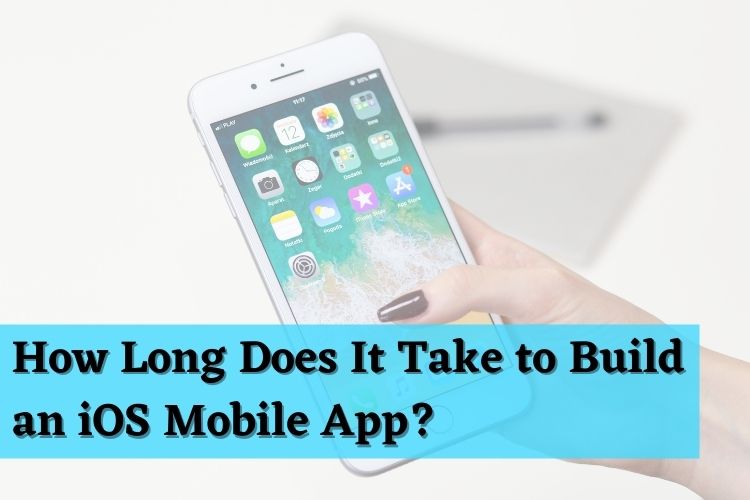This is the most common question that I have heard, in the area of app development and designing. coding can sometimes be a difficult task to do, especially when you are building for a particular platform.
To answer this question, it usually takes about three to four months in order to successfully develop an app for any platform Android or iOS. That should be ready before any public will release is done, the company is longing to release a minimum viable product that they can use as a prototype in order to gather feedback a phone and then improve on it provided, and then make the best use of of the provided feedback, so that they can work on it. When I see development for an app, it usually involves brainstorming, analysis, selection of a particular type platform and data Technology to build the app on, researching about the particular target audience, development animation in only forms the part of creation for there. The rest is the big long process that goes into the development of the mobile app right from scratch. Depending on the company or the organization, this time frame can also contain or not contain the product definition and the design stages of building a mobile app.
There are some factors that can help affect and impact your time frame for the development process, these factors are the composition of your overall development team, as well as the type of methodology used for development purposes that are used to decide the time required for mobile app development.
We can easily make an assumption that the mobile app will be used to be integrated with the backend service structure using different components and API is possible. The API structure can already be built in parallel or can be used as a third-party component infrastructure that could readily exist, or can be developed in parallel.
Generally, the common approach to be building a mobile app can be either building a front end, and a backend. The front end would be composed of the consumer part that is visible to the target audience. and the back and comprises the dashboard and management tasks that define the configuration and settings for your app. Both these components Work in tandem with each other to provide the perfect environment for your mobile app to exist, co-ordinate and co-operate with that end-user Android in the perfect environment to work or to do particular tasks.
You can easily provide a head start to your development team, and they will be able to form up their endpoints and API in advance, start the process of the development for building your mobile application. You can Hire iOS Developer if you are looking for iOS App Development.
The back end of the application comprises the following components, and the following activities take place
- Data storage: These are the building blocks for any kind of mobile application, mobile through native technologies and nonnative technologies as well
- User management: User profile creation, maintenance of user accounts, taking care of authentication and security, and providing different levels of access to users.
- Server-side logic: The process to handle requests from the app’s front end for the different users.
- Data integration: Providing users access to information through third-party sources, social media networks for publishing and involvement, and engagement.
- Push notifications: Maintaining engagement with different kinds and types of users continuously.
- Versioning: Making different versions of the app exist and making newer versions live on the mobile app platforms namely the iOS app store or the Google Androids Play store.
The typical activities that on carried out for front end development consist of the following:
- Front end logic: Details about what activities are carried out and handled by the logical code stored locally on the target audience’s devices namely mobile phones and tablets.
- Caching: Storage of the overall data to speed up load time for the application under development.
- Synchronization: The process of online and offline usage without having any conflicts in data.
- Wireframing: The overall blueprints of the app, how it would look like, the overall user experience the app is providing.
- UI design: Pixel-perfect user interface development and design elements that make up the app structure. The screens for the app.
- UI development: Translating the mockup screens into user interface code for the app designing process.
- UI polishing: The overall improvements that polish the app and make it truly stand out from the competition.
When will you make use of an iterative software development and that means keeping the main focus of the customer who is going to use the app, the time of about 3 to 4 months depending on the features and functionality of the app should be sufficient enough time to release the product into the market, thus making your community and as well as on your network proud.
Your app can also easily take some more time to develop, as the engineering process of developing an app can easily take overhead time depending on the features and the requirements that the app needs to have. The overhead time taken by the development team is easily admitable, as the development process goes hand in hand with designing the process in an iterative fashion that ensures, the overall app development process is as per standards.
You need to ensure that you put a viable and accountable team that takes some responsibility and accountability for the overall app development process. There will be different stakeholders involved in the management and designing of the app, separate engineers for your UI and UX designing, the logic team for the development of the overall business logic for the app, and the database back and team handling of the database tasks seamlessly.
It goes without saying that your front entries to be in harmonious sequence as well as be able to coordinate and co-operate with the backend with regards to data input and output for the app development and processing needs. You can provide a total head start to your development process by allowing things to place in parallel so that they are able to sufficiently meet your timing requirements, and get developed in the stipulated time frame estimated.
Conclusion: Typically a small to medium app will take anywhere between 3 to 4 months to develop, why the medium to large scale enterprise app will take anywhere between 6 to 12 months to develop. this is the time frame that it normally takes for building an iOS app development.














